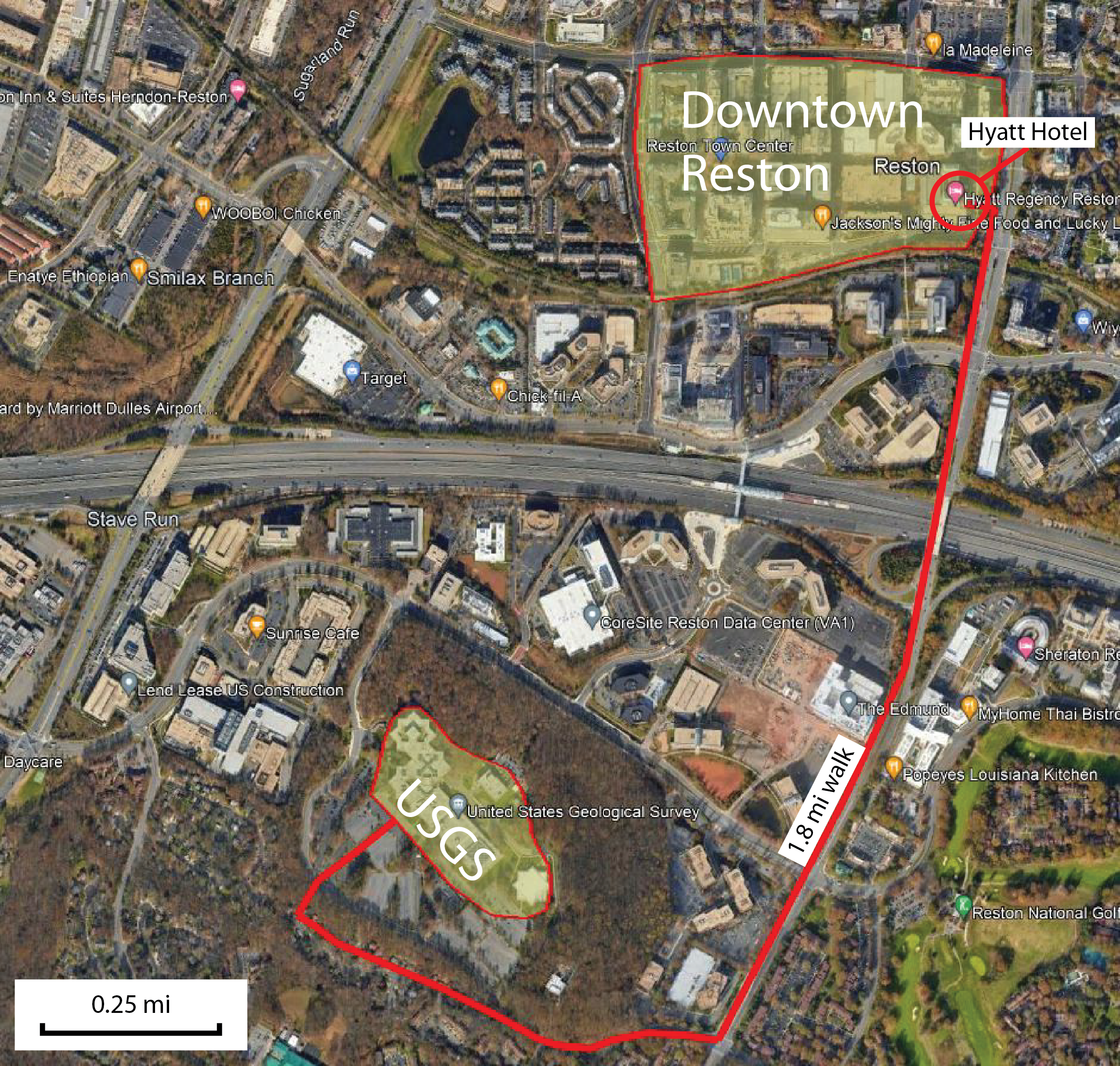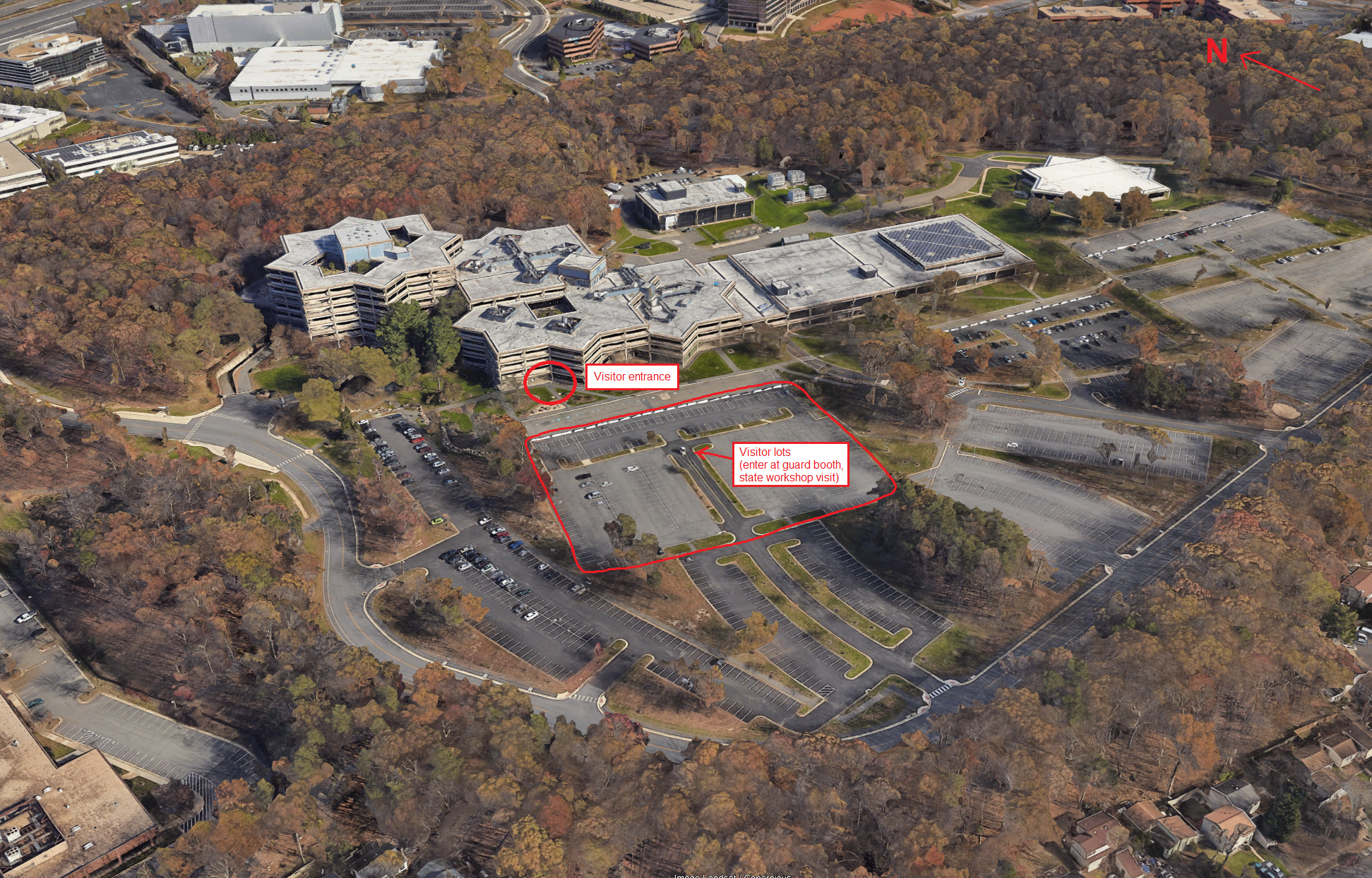meta data for this page
ICE-D workshop: Reston, VA (USGS), March 14-16, 2023.
Objective
We aim to expand the community of people who can contribute to and work with the ICE-D database and infrastructure. We will be teaching you how to use the tools necessary to interact with ICE-D, and we will provide examples and a platform for discussion to help you make your own meaningful visualizations, applications and analyses of cosmogenic nuclide exposure data.
For more information about the ICE-D project, please visit the Top level page of this wiki
The focus of this workshop will be on building and expanding the Laurentide Ice Sheet application, but we welcome others who are more generally interested in using ICE-D as well.
Ideally, attendees will come away from the workshop with the following:
1) Enough knowledge of how the ICE-D database and associated software works to interact with it, add data to it and quality-control existing data, and contribute to maintaining and improving it.
2) Some ideas about what visualizations, applications and analyses are possible with this tool and what software/skills you need to make them happen.
Topics
– How the infrastructure is set up
– How the database is organized
– How to put data into the database (hands-on)
– Spend some time digging LIS/other data out of the literature and expanding the database
– How to get data out of the database using MATLAB, Python, GIS, etc.
Possible extra topics
– How to use ICE-D data in an embedded web map
– How to build a web application that uses ICE-D data
Tentative schedule of events
The workshop is scheduled for 3 days, and each day is laid out roughly as follows:
Day 1: Introduction, database connections, and data entry
– 9:00am - 10:00am: Intro to the ICE-D project, ice breakers, basic concepts of database setup, etc.
– 10:00am - 12:00pm: Check in with everyone to make sure they know how to 1) connect to the database, and 2) add data to the database through our admin page on the website (see tutorial links below for instructions)
– 12:00pm - 1:00pm break for lunch
– 1:00pm - 5:00pm Spend the remainder of the day mining the literature and doing data entry
Day 2: Data visualizations, applications and analyses using ICE-D Part I
– 9:00am - 10:00am: review of previous day's topics/intro today's topics, questions, discussion, etc. (if necessary)
– 10:00am - 12:00pm: Setting up connections to ICE-D through other software, mainly Matlab and desktop GIS applications like QGIS
– 12:00pm - 1:00pm: break for lunch
– 1:00pm - 5:00pm: examples/discussion of potential visualizations/applications/analyses using ICE-D.
Day 3: Data visualizations, applications and analyses using ICE-D Part II
– 9:00am - 10:00am: review of previous day's topics/intro today's topics, questions, discussion, etc. (if necessary)
– 10:00am - onward: examples/discussion of potential visualizations/applications/analyses using ICE-D. At this stage if there is time/interest we can dive into web applications and visualizations using for example python and leaflet.
The final day is Usually a little more informal. Mainly, we focus on brainstorming ideas of analyses and visualizations one could do with ICE-D and exploring some of these ideas on the fly. Attendees are encouraged to stay as long as they like but if folks need to leave early, after this point we will have hopefully given everyone the tools they need to interact with ICE-D so they won't miss any further instructions.
Pre-workshop preparations/tasks
Much of our process for viewing and adding data to ICE-D has become quite streamlined, but you can help expedite the process even more by taking the following steps prior to the meeting:
Step 1 Come prepared with a brief bio about yourself; what are your interests, current projects you are working on, and what you are hoping to get out of the workshop (5-ish minutes).
Step 2 Determine what personal machine (most likely a laptop) you plan on using for a while to interact with ICE-D (the setup is basically platform-independent and we are using/have used Mac, Windows, and Linux machines). Part of the connection scheme is unique to each individual machine, so it is best to try to pick one and stick with it if you can.
Step 3 Read through our tutorials ahead of time! Inevitably there will be challenges with getting everyone connected to the database but as previously stated things are somewhat streamlined at this point and the tutorials are helpful.
3.1 Find the tutorials for connecting to the database through SQL Clients here: Windows Users | Mac and Linux Users
3.2 Find the tutorial for getting set up and adding data through the admin panel on the ICE-D webpage here: Data entry page
3.3 The page general page for connecting to ICE-D, adding data to ICE-D and examples of applications and visualizations also has lots of other info available that attendees are encouraged to check out: ICE-D tutorials, visualization and analysis applications page
Step 4 if you can, and have time for it, come to the workshop with either your own data for data entry or data from a paper or two that you know of that have not yet been entered into ICE-D (can pertain specifically to the Laurentide Ice Sheet but doesn't have to be!). Furthermore, try to brainstorm ahead of the workshop what sorts of visualizations, applications, and/or analyses you might like to explore using ICE-D.
Step 5: Bring some form of government issued ID such as a drivers license for US citizens and passports for international folks (please read the following section about entering the USGS office). There are a few things we will be required to do as guests in the building so be prepared).
Location details and Logistics
USGS Reston offices
– Our contact at the USGS, Will Odom has reserved a space in the USGS building. There are a few things to prepare for, and Will has kindly written out instructions for us:
1) The room number is 3B457. The building can be confusing to navigate (see p. 21 here for a map of the third floor), so we may benefit from putting up some signage when the time comes. That said, guests will need to check in through the visitor center (see oblique view USGS building image at the bottom). They will need to bring driver's licenses (or other IDs) for US citizens - passports for international folks - and pass through a metal detector, in addition to having their belongings X-rayed.
2) Upon going through security, they will take the elevator at the end of the security checkpoint to the third floor. They'll then take a left out of the elevator, which will lead them to a long hall to their left. They will walk nearly all the way down that hall, until they reach 3B457 on the right.
3) Upon getting through security, guests receive a visitor sticker. They'll need to pass through security again if they leave the building and return.
4) For those driving to the building each day, Will included an outline of the visitor parking spaces in the oblique USGS building image at the bottom of this page.
Lodging
– The official hotel for the immediately following GSA section meeting is the Hyatt in Reston Town Center. However, it appears that the conference rate is not valid during the workshop, so it is quite expensive.
– Greg and Joe have reserved rooms at the Sheraton Reston Hotel - 11810 Sunrise Valley Dr, Reston, VA 20191 (Booking page).
–This hotel is slightly outside the downtown center where most Reston restaurants are located, but is approximately equidistant from the USGS office and downtown, about a mile apart from each. We will likely be walking to and from the hotel for the workshop/dinners/etc. See google earth image at the bottom of this page for the general layout.
– Workshop attendees who will be getting reimbursed and/or those who will not have access to a car, we recommend the Sheraton Reston Hotel since 1) the hotel is in a convenient location, and 2) we can only reimburse attendees up to ~$1000 per person. Although please feel free to make whatever reservations work best for you. Let Joe know if you have any issues with bookings.
Attendees
Number of people: target 10 participants, plus workshop leaders (Balco, Tulenko) and USGS folks
Target audience: Graduate students, postdocs, early-career faculty who are interested in synoptic analysis of cosmogenic-nuclide data.
Student/early career support
NSF funding is available to support participant travel. At present we believe we can support 10 attendees. Funding will be prioritized by inverse career state: students, then postdocs, etc.
– for those who we can offer support:
1) You will be asked to purchase your own flights, reserve your own hotel rooms, and cover your own per diem expenses
2) Please hold onto receipts and send copies of all receipts to Joe Tulenko (jtulenko@bgc.org).
3) Attendees will fill out a travel form supplied by the Berkeley Geochronology Center.
4) Once all receipts and travel forms are submitted, BGC will send out reimbursement.
NOTE: If purchasing in advance will create a financial hardship, please let us know.
Please email Joe Tulenko (jtulenko@bgc.org) if you have any questions.
Please find the travel reimbursement form here: travelform.xls
Applications
NOTE: applications for this workshop are closed as of Feb 15th.
Some workshop participants have been invited by the organizers. We are also soliciting applications for additional participants. Applicants should have the following properties:
– Involved in research having to do with cosmogenic-nuclide exposure dating of glacier change
– Involved in or interested in using large data exposure-age data sets for synoptic climate or glacier change analysis
– Motivated to participate in the ICE-D project in future by (i) building or maintaining data, (ii) developing new analysis or visualization applications, or (iii) using ICE-D resources for undergraduate/graduate teaching or outreach.
– Some knowledge of programming environments used to build websites and/or analyze data, for example SQL, Python, and MATLAB.
– Most likely a graduate student or postdoc
To apply: submit the following materials to Joe Tulenko (jtulenko@bgc.org) before February 15th:
– A CV
– A letter explaining (i) how you meet the requirements above, and (ii) what you would like to do with the ICE-D databases or infrastructure
A map of Reston, VA with the Hyatt Hotel, downtown, and the USGS highlighted. The Sheraton is also visible.

Oblique view of the USGS Building, highlighting the visitor entrance and visitor parking lot.
